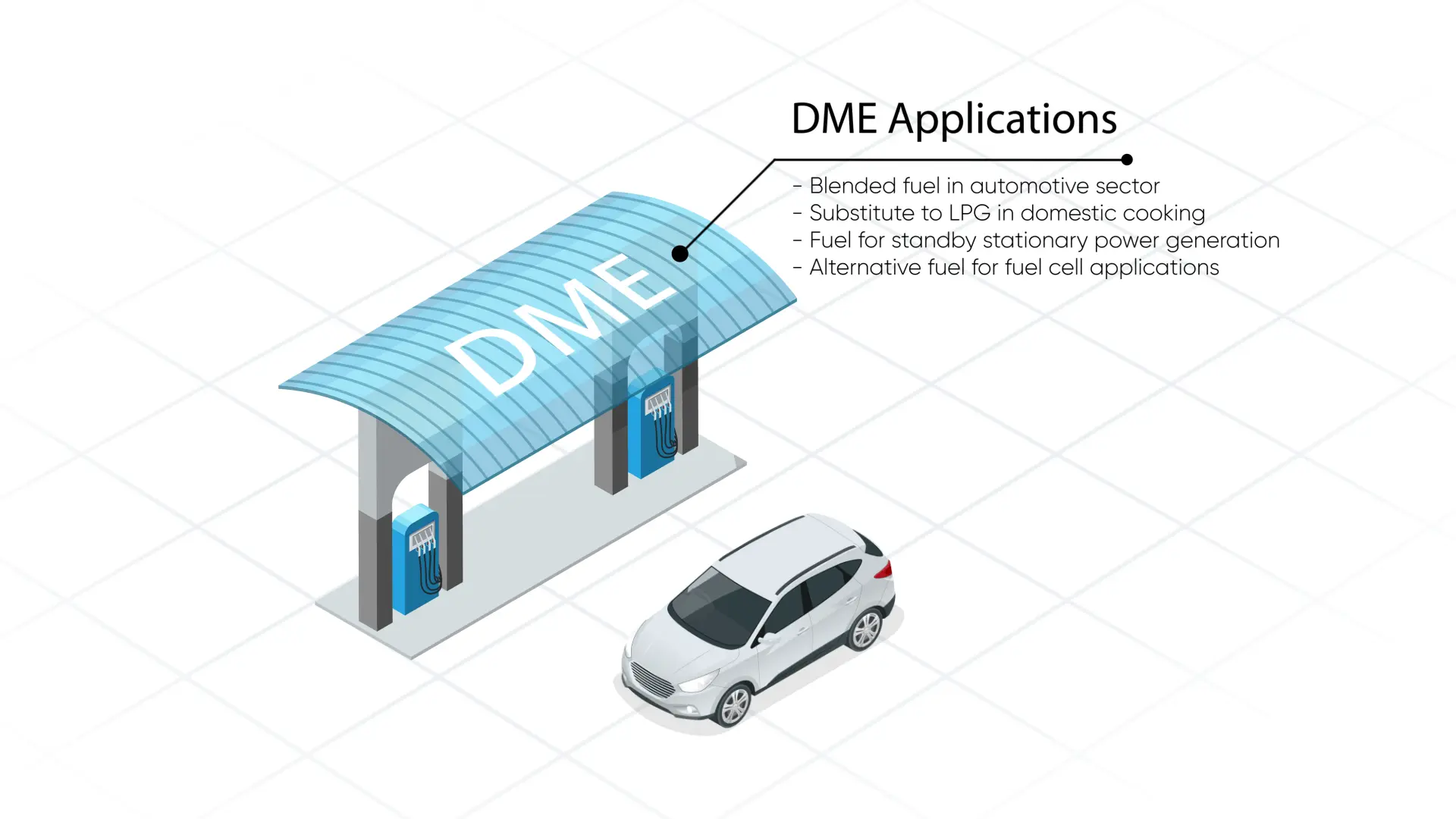Applications of DME

As mentioned in the previous article, the planned fuel chain for this project involves the conversion of coal and carbon dioxide, along with carbon from lignite, using a patented process of carbon recycling. This process results in the production of DME and power in a polygeneration power plant. Additionally, methanol is utilized to seamlessly produce DME for various applications, including:
Transportation: DME has significant potential as a cleaner fuel for transportation. By converting diesel vehicles to use DME or DME blends, emissions from transportation can be significantly reduced. DME combustion results in near-zero particulate emissions, lower nitrogen oxide (NOx) emissions, and reduced greenhouse gas emissions compared to conventional diesel. Converting diesel vehicles to run on DME or DME blends offers an effective strategy for improving air quality, reducing pollution-related health risks, and achieving sustainable transportation.
Aviation: DME can also be used as a clean aviation fuel or blended with aviation turbine fuel (ATF). The aviation industry is actively seeking ways to reduce its environmental footprint and improve fuel efficiency. DME offers a viable alternative to traditional jet fuels, as it burns cleanly and produces lower emissions, including reduced particulate matter and lower sulfur content. Its use in aviation can contribute to reducing the industry’s carbon footprint and promoting more sustainable air travel.
Domestic Fuel: DME can serve as a substitute for liquefied petroleum gas (LPG) or be blended with LPG for domestic use. This application provides cleaner and more environmentally friendly options for cooking, heating, and other household uses. By replacing traditional fossil fuel-based domestic fuels with DME, emissions of harmful pollutants such as particulate matter, sulfur oxides, and nitrogen oxides can be significantly reduced, leading to improved air quality and better health outcomes for households.
Stationary Power Generation: DME can be utilized for stand-by stationary power generation. This application involves using DME as a fuel source in power plants that provide backup or standby power during times of high demand or power outages. By employing DME in stationary power generation, the efficiency of power generation processes can be increased, and emissions can be reduced compared to conventional fuel sources. This contributes to more sustainable and environmentally friendly power generation.
Fuel Cells: DME can serve as a storage liquid fuel for fuel cell applications, particularly in hydrogen vehicles. Fuel cells are highly efficient devices that generate electricity through a chemical reaction between hydrogen and oxygen. DME can be used as a hydrogen carrier, as it can be easily converted to hydrogen for fuel cell applications. By utilizing DME in fuel cells, energy can be efficiently stored and converted into electricity, providing a sustainable and low-emission power source for various applications, including hydrogen-powered vehicles.
The diverse range of applications for DME demonstrates its versatility and potential as a clean and sustainable fuel alternative. By replacing conventional fuels with DME or blending it with existing fuels, emissions can be significantly reduced, contributing to improved air quality, reduced environmental impact, and a more sustainable future across transportation, aviation, domestic use, stationary power generation, and fuel cell applications.


